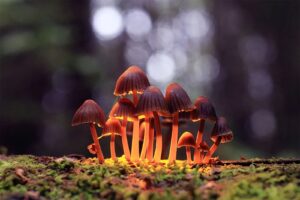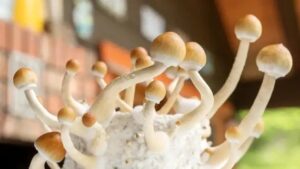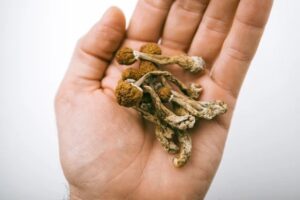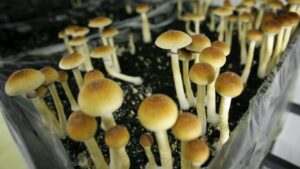
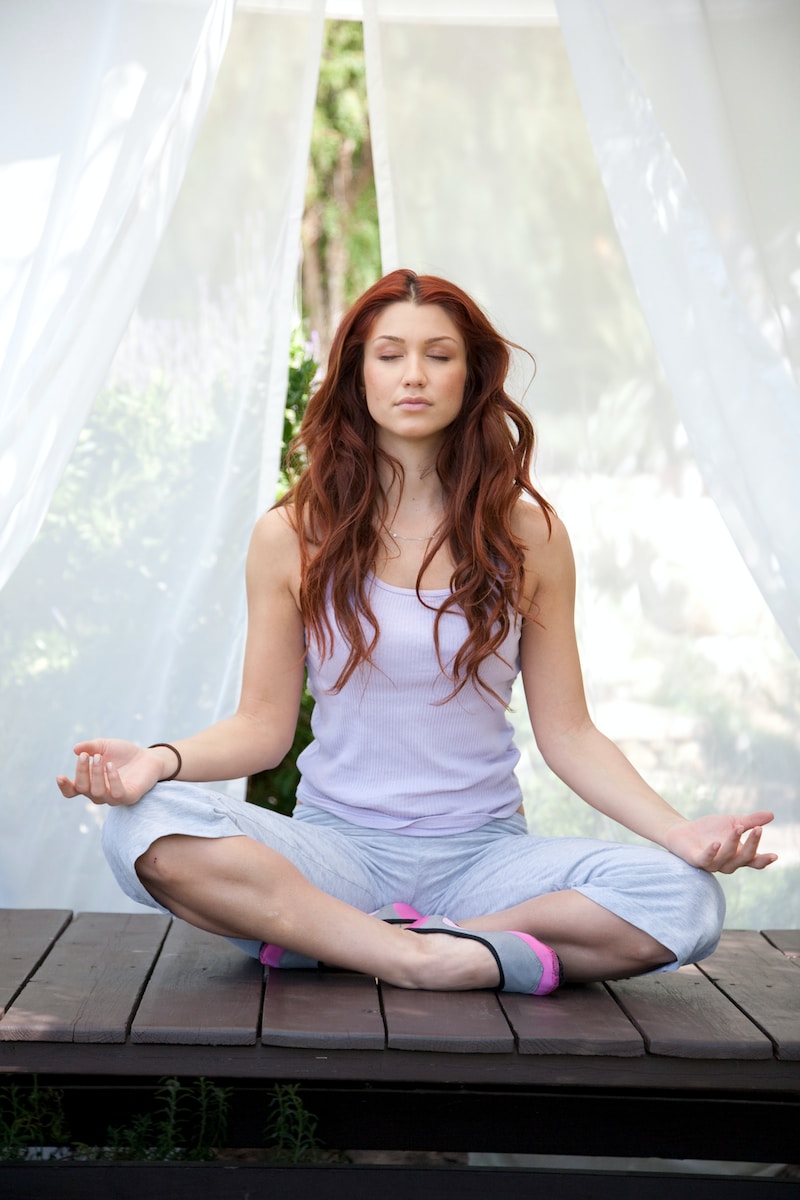
Psilocybin microdosing refers to the practice of consuming very small, sub-perceptual
amounts of psilocybin on a regular basis, typically once every few days. Unlike a full
psychedelic experience, microdosing is intended to produce subtle, long-lasting effects
that can enhance creativity, productivity, and well-being without causing hallucinations
or impairing normal functioning.
While the precise dosing and frequency of microdosing can vary, a typical dose is
around 0.1-0.5 grams of dried mushrooms, which is well below the threshold for a full
psychedelic experience. Advocates of microdosing claim that it can help alleviate
symptoms of depression and anxiety, enhance focus and creativity, and improve
relationships and social interactions.
Psilocybin macrodosing refers to the practice of consuming a relatively large amount of psilocybin-containing mushrooms or truffles to induce intense psychedelic experiences. Unlike microdosing, which involves taking sub-perceptual doses for subtle effects, macrodosing aims for more pronounced and profound psychedelic effects. It is often used for therapeutic, spiritual, or introspective purposes, but it is important to note that macrodosing should be approached with caution and under proper guidance due to the potential for intense psychological experiences.
The specific amount of mushrooms considered a macrodose can vary depending on various factors, including the potency of the mushrooms and an individual’s tolerance. However, a common guideline for psilocybin macrodosing is typically between 2 to 5 grams of dried psilocybin-containing mushrooms. This dosage range is generally considered to produce strong psychedelic effects and is recommended for experienced users who are familiar with the effects of psilocybin. It’s important to note that individual sensitivity and tolerance can differ, so starting with a lower dose and gradually increasing as needed is advisable. Additionally, it is crucial to approach macrodosing responsibly and in a safe setting.
The frequency of microdosing and macrodosing psilocybin can differ significantly. Here are some general guidelines for each.
Microdosing is typically done on a schedule that allows for regular, intermittent use. The most common microdosing schedule is taking a dose every few days or every third day. This pattern provides time for the effects of the microdose to subside before the next dose is taken. Some individuals may choose to follow alternative schedules, such as five consecutive days followed by two days off or using a more customized approach based on personal preference and response. Everyone is different and it often takes a bit of experimentation to find out the schedule that works best for you.
Macrodosing is often approached as a more infrequent and intentional experience. Unlike microdosing, macrodosing is not meant to be a regular or routine practice. Nor will you want to macrodose frequently because it is often intense as you are putting in emotional healing work. Instead, it is recommended to space out macrodoses with longer intervals between each session. It is common for individuals to wait several weeks, months, or even years between macrodosing sessions to allow for integration, reflection, and preparation for the next experience.
Psilocybin can be consumed in different forms for both microdosing and macrodosing. Here are the common forms used for each:
Microdosing:
Macrodosing:
It’s important to note that the choice of form for psilocybin consumption can depend on personal preference, availability, and desired effects. Whichever form you choose, it’s crucial to accurately measure and monitor your dosage to ensure consistency and safety. Additionally, consulting with experienced individuals or healthcare professionals knowledgeable about psilocybin use can provide further guidance on the appropriate forms and methods for microdosing or macrodosing.
The duration of effects for microdosing and macrodosing psilocybin can vary. Here’s a general overview of the typical duration for each:
Microdosing: Microdosing with psilocybin is intended to produce subtle effects that are often sub-perceptual, meaning they are not overtly noticeable. As a result, the duration of effects is usually shorter compared to macrodosing. The effects of a microdose can vary among individuals but are generally reported to last for around 4 to 6 hours. However, it’s important to note that the effects may be subjective and influenced by factors such as individual sensitivity, metabolism, and dosage.
Macrodosing: Macrodosing involves consuming a higher amount of psilocybin, resulting in more pronounced and intense psychedelic effects. The duration of effects for macrodosing is typically longer compared to microdosing. The primary phase of the experience, known as the peak, usually occurs within the first 3 to 6 hours after ingestion. During this time, the effects are most potent. After the peak, the effects gradually subside, and residual effects, such as altered perception and residual stimulation, may last for several more hours. In total, the effects of a macrodose can last around 6 to 10 hours or even longer, depending on the dosage, individual response, and specific factors.
It’s worth mentioning that individual experiences may vary, and the duration of effects can be influenced by factors such as the potency of the mushrooms, metabolism, and personal sensitivity. Additionally, the mindset, environment, and emotional state of the individual can also impact the overall experience and perceived duration of effects.
Always remember to approach psilocybin use responsibly, adhere to safe practices, and consult with knowledgeable individuals or healthcare professionals for personalized guidance on dosage, effects, and durations.
The effects of both microdosing and macrodosing psilocybin can vary from person to person, and individual experiences with anxiety can differ. It’s important to note that psilocybin has the potential to affect individuals differently, and while many people report positive and transformative experiences, others may experience temporary discomfort or anxiety during their psychedelic journey.
Microdosing: Microdosing with psilocybin is generally associated with sub-perceptual effects, meaning the doses are typically too low to induce intense psychedelic experiences. As a result, the likelihood of experiencing anxiety is generally lower compared to macrodosing. Microdoses are often reported to provide subtle enhancements in mood, focus, and creativity, without causing significant anxiety or overwhelming effects. However, individual responses can still vary, and some people may have a sensitivity that could result in mild anxiety or unease.
Macrodosing: Macrodosing with psilocybin involves consuming higher doses, which can lead to more intense psychedelic experiences. While many individuals have profound and positive experiences during macrodoses, it’s possible for some people to experience anxiety or feelings of discomfort. The heightened state of consciousness and altered perception induced by a macrodose can sometimes amplify existing emotions, including anxiety. It’s crucial to approach macrodosing with proper preparation, a supportive environment, and, ideally, the guidance of experienced individuals to minimize the risk of anxiety or adverse reactions.
It’s important to prioritize set (mindset), setting (environment), and intention when using psilocybin. Creating a safe and comfortable environment, being in a positive mindset, and having a clear intention for the experience can contribute to a more positive and potentially anxiety-free psychedelic journey.
If you have a history of anxiety or concerns about experiencing anxiety during psilocybin use, it’s highly recommended to consult with a healthcare professional or an experienced guide who can provide personalized advice, support, and help create the most suitable conditions for your specific needs.
In both psilocybin microdosing and macrodosing sessions, a guide can provide valuable support and assistance. Here’s an overview of what a guide may do in each type of session:
Psilocybin Microdosing:
Preparation and Education: A guide can help educate you about microdosing, explain the potential effects and benefits, and provide information on dosage, frequency, and best practices. They can help you understand what to expect and set appropriate intentions for your microdosing journey.
Personalized Guidance: A guide can offer personalized guidance based on your unique needs, goals, and experiences. They can help you develop a microdosing protocol that suits your preferences and provide support throughout the process.
Dosage Monitoring and Adjustment: A guide can help you establish the right dosage for your microdosing regimen. They may assist in measuring and preparing the doses or provide guidance on how to accurately measure and adjust dosages on your own.
Integration Support: A guide can support you in integrating the microdosing experience into your daily life. They may help you reflect on the effects, assist in journaling or self-reflection exercises, and provide guidance on how to apply the insights gained from microdosing to enhance personal growth and well-being.
Psilocybin Macrodosing:
Preparing the Setting: A guide can assist in creating a safe and comfortable environment for the macrodosing session. They may help with setting up a calm and supportive space, ensuring appropriate lighting, comfortable seating, and soothing music.
Preparation and Education: Much like with microdosing, a guide can help educate you about macrodosing, explain the potential effects and benefits, and provide information on dosage, frequency, and best practices. They can help you understand what to expect and set appropriate intentions for your journey. This preparation step is very important.
Emotional Support: During a macrodosing session, a guide can offer emotional support and reassurance. They can help you navigate intense emotions or anxiety that may arise during the experience, providing a calming presence and guidance on how to approach and process challenging moments.
Facilitating Introspection and Exploration: A guide can encourage introspection and guide your focus during the macrodose session. They may suggest topics for reflection, offer prompts for self-exploration, or engage in meaningful conversations to deepen your understanding and insights.
Integration and Follow-up: After the macrodose session, a guide can assist in the integration process. They can help you make sense of the experience, provide guidance on how to incorporate the insights gained into your life, and support you in processing and understanding the long-term effects of the macrodosing experience.
It’s important to note that the role of a guide can vary depending on the individual, their needs, and the specific approach to psilocybin use. The guide’s primary objective is to provide support, safety, and a nurturing environment throughout the microdosing or macrodosing journey.
The combination of depression and anxiety medication with psilocybin microdosing or macrodosing can have complex and potentially unpredictable interactions. It’s important to note for legal purposes that we are not healthcare professionals, so we cannot provide specific medical advice. However, we can offer some general considerations:
Psilocybin Microdosing:
Antidepressants: Some individuals who are on antidepressant medications may choose to microdose with psilocybin. It’s important to consult with a healthcare professional or psychiatrist who can provide guidance on the potential interactions between psilocybin and your specific antidepressant medication. Certain antidepressants, such as selective serotonin reuptake inhibitors (SSRIs), may affect the effects of psilocybin and could potentially diminish or alter the experience.
Anti-anxiety Medication: Similarly, if you are taking anti-anxiety medication, it’s important to discuss potential interactions and risks with your healthcare provider. Benzodiazepines and other anti-anxiety medications can have sedative effects, and combining them with psilocybin could intensify those effects. This could potentially lead to increased drowsiness, relaxation, or changes in perception.
Psilocybin Macrodosing:
Antidepressants: Mixing psilocybin macrodosing with antidepressant medication can have significant effects and interactions. Certain antidepressants, particularly SSRIs, can dampen the effects of psilocybin due to their influence on serotonin receptors. This could potentially reduce the intensity of the psychedelic experience or alter the expected outcomes. It’s crucial to consult with a healthcare professional or psychiatrist before combining psilocybin macrodosing with antidepressant medication.
Anti-anxiety Medication: Combining psilocybin macrodosing with anti-anxiety medication can also lead to interactions and unpredictable effects. Benzodiazepines and other anti-anxiety medications can have sedative effects, which could be intensified when combined with psilocybin. This may result in increased relaxation, drowsiness, or changes in perception.
It’s important to emphasize that the specific interactions between psilocybin and medication can vary based on the individual, the specific medications, dosages, and other factors. It is crucial to consult with a healthcare professional who is familiar with your medical history and can provide personalized advice and guidance. They can assess the potential risks, benefits, and any potential drug interactions specific to your situation. Project Circle covers much of this in their onboarding documents, and the Project Circle team can offer guidance, in conjunction with your healthcare provider.
Microdosing and macrodosing of psilocybin may have differing impacts on treating anxiety, depression, and addiction. Here’s a general overview of how these approaches can differ:
Microdosing:
Anxiety: Microdosing with psilocybin may help reduce symptoms of anxiety by promoting a subtle shift in mood, enhancing creativity, and increasing a sense of well-being. The sub-perceptual doses used in microdosing are typically intended to provide therapeutic benefits without inducing intense psychedelic effects. Microdosing may help individuals manage anxiety on a day-to-day basis and improve overall emotional stability.
Depression: Microdosing may alleviate symptoms of depression by promoting positive mood, increasing energy, and enhancing cognitive flexibility. Some individuals report improved motivation, focus, and emotional resilience with microdosing. It’s important to note that while microdosing can be beneficial for some, it may not be sufficient as a standalone treatment for more severe forms of depression.
Addiction: Microdosing has shown potential in assisting individuals with addiction by facilitating self-reflection, enhancing introspection, and promoting a shift in perspective. It may help individuals gain insights into their patterns of addictive behavior and create space for behavioral changes. However, microdosing alone is not considered a standalone treatment for addiction, and a comprehensive approach, including therapy and support, is typically recommended.
Macrodosing:
Anxiety: Macrodosing with psilocybin can have variable effects on anxiety. While some individuals report experiencing relief from anxiety symptoms after a macrodose session, others may experience temporary intensification of anxiety during the psychedelic experience. The context, mindset, and guidance during the macrodose session play crucial roles in shaping the impact on anxiety. Proper preparation, a supportive environment, and professional guidance are important for managing anxiety during macrodosing.
Depression: Macrodosing with psilocybin has been explored as a potential treatment for depression. The intense psychedelic experience during a macrodose session can lead to profound insights, emotional release, and shifts in perspective. Some individuals have reported significant improvements in mood, reduced depressive symptoms, and increased well-being following macrodosing experiences. However, it’s important to note that macrodosing should be approached with caution and under professional guidance.
Addiction: Psilocybin macrodosing, when combined with therapy and support, has shown potential for assisting individuals with addiction. The intense and transformative nature of the macrodose experience can facilitate profound self-reflection, emotional processing, and a reevaluation of priorities. Psilocybin-assisted therapy may help individuals break patterns of addictive behavior and initiate long-lasting changes. However, macrodosing for addiction should always be conducted under the supervision of trained professionals.
It’s important to emphasize that the impact of both microdosing and macrodosing can vary among individuals. Each approach has its own set of considerations, benefits, and potential risks. Working with qualified healthcare professionals who specialize in psychedelic therapy can provide personalized guidance and help determine the most suitable approach for treating anxiety, depression, or addiction.
The cost difference between psilocybin macrodosing and microdosing can be attributed to several factors:
Dosage: Psilocybin macrodosing involves consuming higher doses of psilocybin, typically in the range of 1 to 5 grams or more. Obtaining a sufficient quantity of psilocybin mushrooms or other forms of psilocybin for macrodosing can be more expensive compared to the smaller doses used in microdosing, which are typically around 0.1 to 0.3 grams.
Intensity and Experience: Macroscopic experiences with psilocybin involve more intense psychedelic effects and a deeper exploration of consciousness compared to the sub-perceptual effects of microdosing. The increased intensity and potential for profound experiences during macrodosing sessions may require additional support, such as experienced guides or therapists, which can contribute to the overall cost.
Set and Setting: Macroscopic experiences with psilocybin often require a carefully curated set (mindset) and setting (environment) to ensure a safe and supportive environment. This may involve creating a comfortable space, providing appropriate lighting, playing calming music, and having trained professionals present. The costs associated with creating and maintaining such an environment can contribute to the higher overall cost of macrodosing.
Supervision and Integration: Due to the potentially intense and transformative nature of macrodosing experiences, individuals often benefit from post-session integration support. This can involve integration therapy, follow-up sessions, and ongoing support to help process and integrate the insights gained from the experience. These additional services can increase the overall cost of psilocybin macrodosing.
It’s worth noting that the costs associated with psilocybin experiences can vary depending on various factors, including geographical location, the legal status of psilocybin, the availability of qualified professionals, and the specific services and support provided.
It’s important to prioritize safety, legality, and ethical considerations when exploring psilocybin use. Engaging in psilocybin experiences should be done with proper research, responsible practices, and guidance from trained professionals to ensure the best possible outcomes.
In terms of safety, microdosing with psilocybin is generally considered to have a lower risk compared to macrodosing. Here are a few reasons why:
Lower Intensity: Microdosing involves taking sub-perceptual doses of psilocybin, which means the effects are subtle and typically do not induce intense psychedelic experiences. The purpose of microdosing is to achieve the therapeutic benefits of psilocybin while minimizing any potential disruptive effects on daily functioning. The lower intensity of microdosing reduces the likelihood of encountering overwhelming or challenging experiences.
Reduced Risk of Negative Reactions: Macroscopic experiences with psilocybin can sometimes lead to heightened emotions, intense introspection, and altered states of consciousness. These effects can be unpredictable and may cause anxiety, confusion, or a sense of loss of control for some individuals. Microdosing, on the other hand, aims to provide a more stable and predictable experience, minimizing the risk of such negative reactions.
Easier Integration: Microdosing can be integrated more seamlessly into daily life due to its subtle effects. It allows individuals to maintain their regular routines and responsibilities without significant disruption. In contrast, macrodosing often requires a dedicated period of time for the experience and subsequent integration, as the intensity of the effects may necessitate focused attention and support.
Smoother Transitions: The transition from a sober state to a microdose and back is generally smoother compared to the transitions associated with macrodosing. Macroscopic experiences can have more pronounced and abrupt shifts in perception, potentially leading to disorientation or confusion during the onset and offset of the psychedelic effects.
While microdosing is generally considered safer, it’s important to approach any use of psilocybin with caution and responsibility. Individual responses to psychedelics can vary, and certain factors, such as pre-existing medical or psychiatric conditions, medication interactions, or personal sensitivities, can influence the safety and suitability of microdosing or macrodosing.
It is strongly recommended to consult with a healthcare professional or a qualified psychedelic therapist who can assess your individual circumstances, provide personalized guidance, and ensure that your use of psilocybin aligns with your specific needs and goals.
Creating a safe psilocybin macrodose session involves careful planning, preparation, and consideration of various factors. Here are some guidelines to help ensure a safer macrodosing experience:
Set and Setting: Choose a comfortable, safe, and supportive environment for your macrodose session. This could be a calm and familiar space where you feel secure. Remove any potential hazards or distractions from the environment to minimize the risk of accidents or interruptions.
Intention and Mindset: Set clear intentions for your macrodose session. Reflect on why you are choosing to engage in this experience and what you hope to gain from it. Cultivate a positive and open mindset, and approach the experience with respect and reverence for the potential transformative nature of psilocybin.
Supportive Guide or Facilitator: Consider having a trusted and experienced guide or facilitator present during your macrodose session. A guide can provide emotional support, ensure physical safety, and offer guidance in navigating the experience. They can help create a container for the session and assist with any challenges that may arise.
Dosage and Substance Quality: Carefully measure and prepare your psilocybin dosage based on your specific intentions and experience level. It’s important to have accurate information about the potency of the mushrooms or psilocybin product you are using. Quality control and sourcing from reputable and trusted suppliers are essential to ensure the purity and safety of the substance.
Integration and Support: Plan for post-session integration and support. Reflecting on the experience, journaling, and discussing insights with a trusted friend or therapist can be valuable for integrating the macrodose experience into your daily life. Consider scheduling follow-up sessions or integrating the experience into ongoing therapy or personal growth practices.
Personal Readiness: Ensure that you are in a good physical and mental state before engaging in a macrodose session. Avoid macrodosing if you have a history of severe mental health conditions, are currently experiencing significant emotional distress, or are taking medications that may have interactions with psilocybin. Consult with a healthcare professional if you have any concerns or uncertainties.
Safety Precautions: Take necessary safety precautions during the macrodose session. This includes having access to water, a comfortable place to rest, and avoiding activities that may pose a risk while under the influence of psilocybin, such as driving or operating machinery. It’s also recommended to have a sober person present to assist if needed.
Remember, the information provided here is general, and it’s important to tailor the approach to your specific needs and circumstances. Seeking guidance from trained professionals experienced in psychedelic therapy can greatly enhance the safety and efficacy of your macrodose session.

Chris Mitchem is the founder and CEO of Project Circle. Chris started Project Circle to help people live their best lives by controlling their depression, addiction, PTSD, and anxiety

